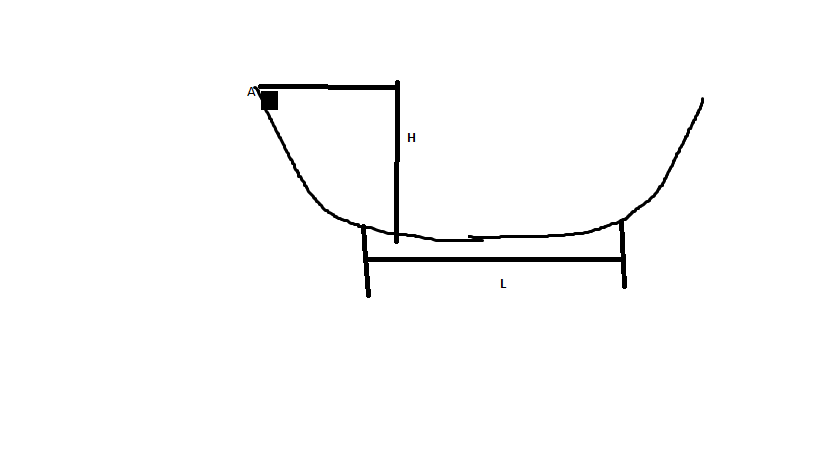Please answer this problem with full explanation and tell me how can i do these kind of q in competitions?
A small object of mass = 234 g slides along a track with elevated ends and a central flat part, as
shown in below figure. The flat part has length L = 2.16 m. The curved portions of the track are
frictionless; but in traversing the flat part, object loses 688 mJ of mechanical energy, due to friction.
The object is released at point A, which is at height h = 1.05 m above the flat part of the track.
Where does the object finally come to rest ?

OPTIONS -
(1) Particle will move back and forth across the flat portion 3.5 times while attempting one last right
to left journey.
(2) Particle will move back and forth across the flat portion 4 times while attempting one last left to
right journey.
(3) Particle will move back and forth across the flat portion 3.5 times while attempting one last left
to right journey.
(4) It will never stop.
A small object of mass = 234 g slides along a track with elevated ends and a central flat part, as
shown in below figure. The flat part has length L = 2.16 m. The curved portions of the track are
frictionless; but in traversing the flat part, object loses 688 mJ of mechanical energy, due to friction.
The object is released at point A, which is at height h = 1.05 m above the flat part of the track.
Where does the object finally come to rest ?

OPTIONS -
(1) Particle will move back and forth across the flat portion 3.5 times while attempting one last right
to left journey.
(2) Particle will move back and forth across the flat portion 4 times while attempting one last left to
right journey.
(3) Particle will move back and forth across the flat portion 3.5 times while attempting one last left
to right journey.
(4) It will never stop.
1 Answer
See below.
Explanation:
Calling
we can represent the energy levels at the extrema as
with
Here
and
so the energy level sequence is
So the conclusion seems to be the option (1)

